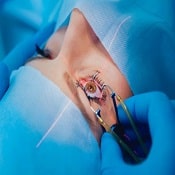

LASIK (laser in-situ keratomileusis) is a common operation that can correct eyesight. It can be performed on nearsighted, farsighted, or have astigmatism. It is one of several vision correction surgeries that work by reshaping your cornea so that light concentrates on the retina at the back of your eye. This reshaping results in the correction of any vision problems that you have.
To make it easy for you to decide what would be a better option for you, we have listed a comparison between contact lenses and LASIK laser eye surgery below:
A qualified eye surgeon or ophthalmologist performs LASIK surgery. Ophthalmologists who perform LASIK surgery may sometimes be referred to as LASIK surgeons.
The three main types of refractive errors for which LASIK eye surgery is done. They are as follows:
Your doctor will advise you to make preparations according to your condition. However, some of the common steps before a LASIK eye surgery is performed are:
LASIK eye surgery takes typically 30 minutes or less.
LASIK eye surgery, like any operation, has some risks. It is a complicated procedure and, if not handled correctly, can cause issues that permanently impair your vision. It is one reason you should go with a surgeon with a lot of experience with these procedures. The other risks include:
Some of the benefits of vision correction surgeries include the following:
LASIK often results in improved vision without the hassle of glasses or contact lenses. In general, you have a very good chance of achieving 20/25 vision or better after refractive surgery. More than 8 out of 10 people who undergo LASIK refractive surgery no longer need to use their glasses or contact lenses for most of their activities.
After LASIK, you may feel a temporary burning or itching sensation immediately following the procedure. You'll probably have blurred vision. When it comes to healing after LASIK eye surgery, it usually occurs very rapidly. Vision may be blurry and hazy for the first day, but most patients notice improved vision within a few days of surgery. Following are some useful tips for you to follow for a quick LASIK recovery:
Click here to book an online surgical procedure through Marham.pk or you can also call us at 04232591427 or 0311-1222398 from 9 am - 11 pm to book an online lab test.
Cost varies depending on the type of surgery and locality.
Yes LASIK Eye Surgery surgery available in Pakistan?
Our qualified team get back with authentic answers!